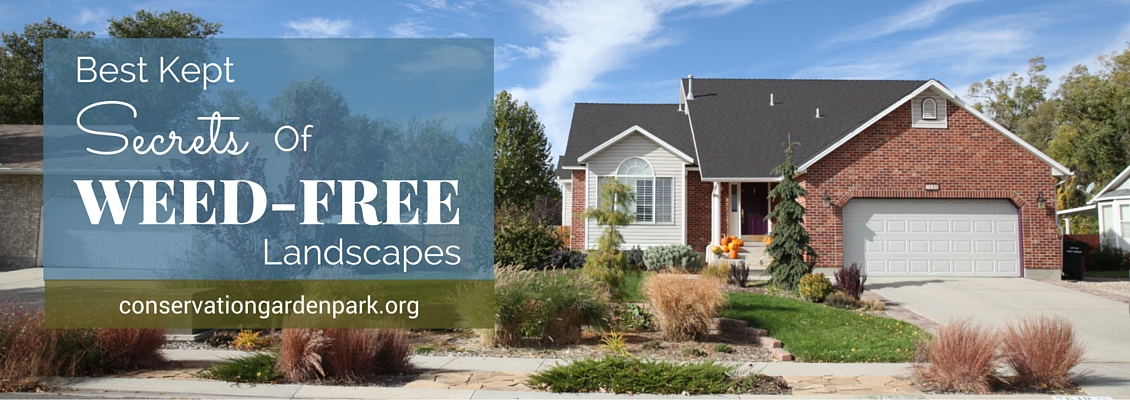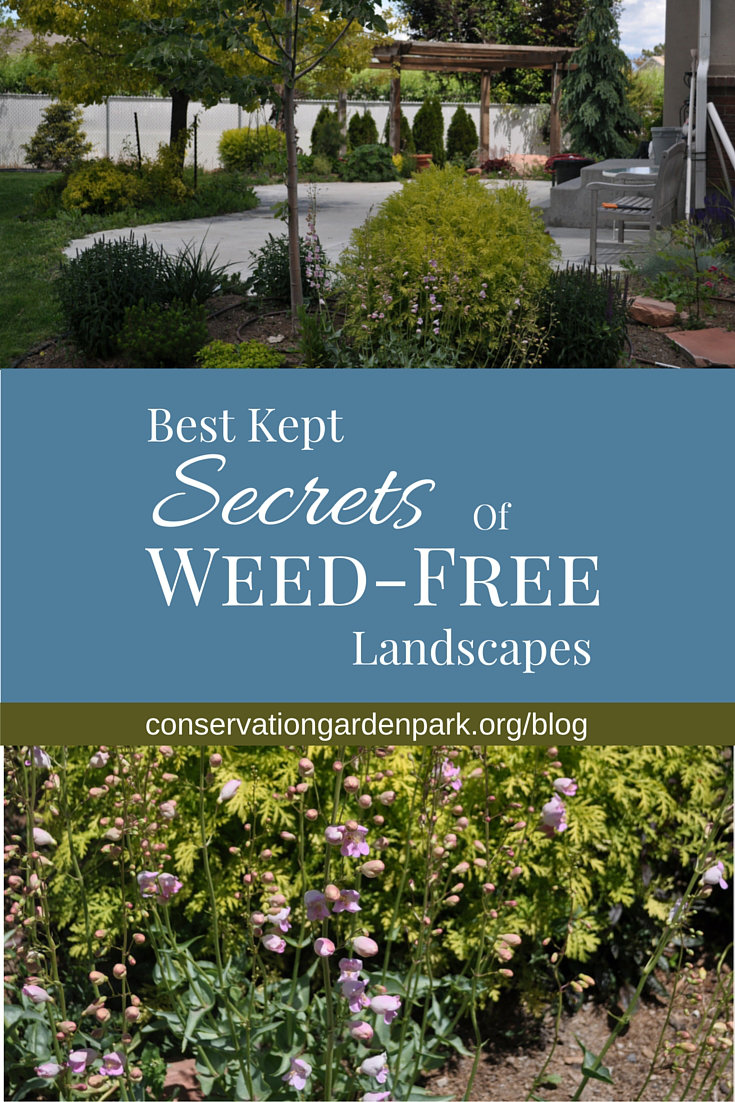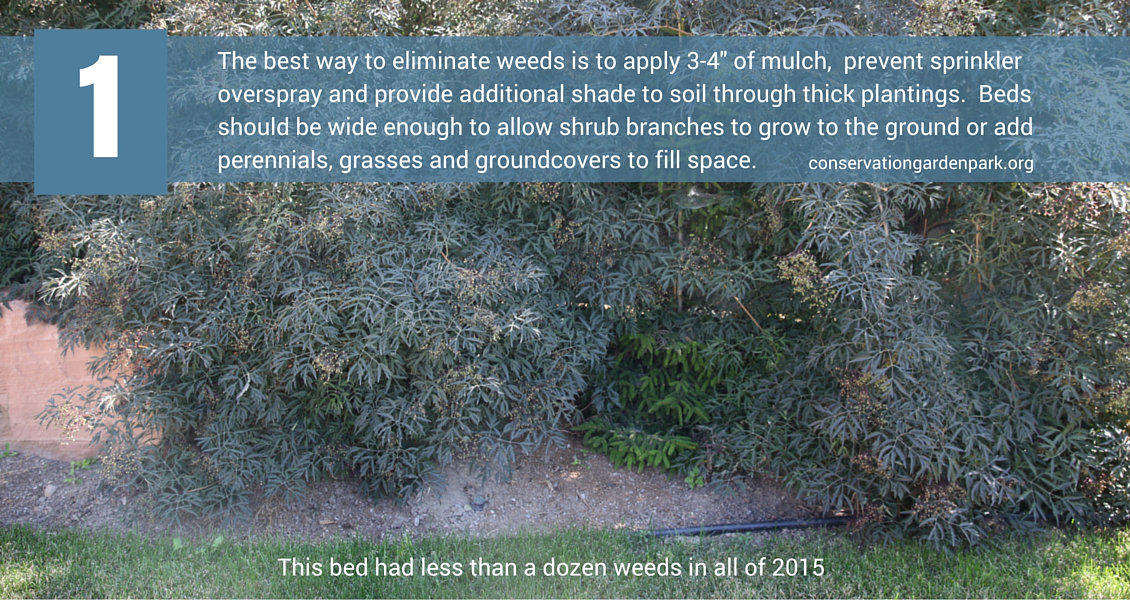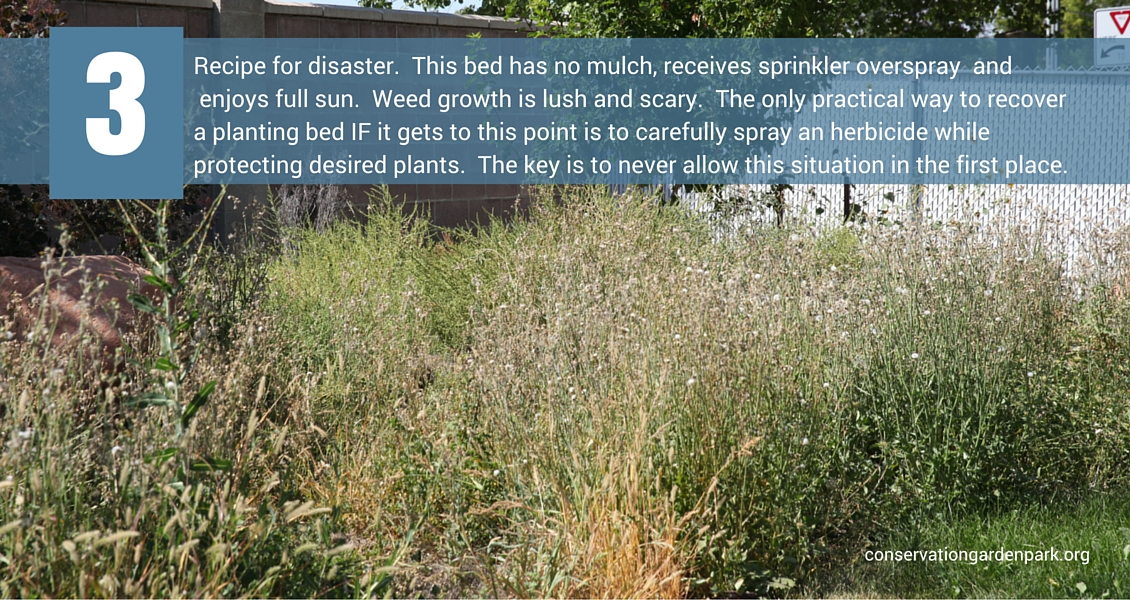
Best Kept Secrets
-

So often we hear that people don’t want to decrease the square footage of lawn on their properties because they perceive that having more planting areas would increase the yard workload. Mowing may be time consuming but it’s also rather mindless and “easy” compared to the basic knowledge required to care for a more interesting and diverse landscape. The single greatest worry, other than cost, that prevents people from changing to a more attractive landscape is that weeding will become an overwhelming task.
There may be no such thing as a beautiful, no-maintenance yard but there are ways to dramatically reduce weeds so that weeding is a quick chore undertaken once per month and in less time than would be required to mow and edge the lawn once. Don’t believe me? Read on!
In order to win the “War of the Weed” we must first understand the extent of the challenge. At any given time your yard is FILLED with many years of weed seed, just waiting for the right conditions to grow. Some of this seed is viable for only a short time and will quickly biodegrade if it does not germinate. Other seed, like that of Field Bindweed aka: Morning Glory, can remain viable for 50 years. Seriously.
Given these fierce competitors, how can the average Joe homeowner who hates weeding hope to win? It’s actually a bit easier than you might imagine- though it does take some thought and planning initially. Surprisingly, our arid climate here in Utah is a BENEFIT to inhibiting weed growth- if we take advantage of it.
There are really just three key “secrets” for weed reduction: shade, water and timeliness. If we consistently fight the battle on those three fronts, victory is assured! -

-
Shady Soil:
Have you ever noticed that weeds grow LESS in shady areas? That’s because sunlight is required for seed germination. Shade doesn’t have to be created by trees and shrubs, the soil can be shaded even in full sun with a thick layer of mulch. A layer of organic mulch that’s 3-4” deep is just as effective as weed barrier fabric as they both deprive the soil of sunlight for seed germination. However, mulch does not bring with it the negative side effects of overly soggy, low-oxygen soils that lacking in beneficial microorganisms created by weed barrier fabric.
Organic mulch provides an additional benefit as it slowly breaks down over time and feeds the soil, creating even better growing conditions. Mulch and shady branches also help retain soil moisture by reducing evaporation, further benefitting the plants.
Another key is making the planting beds the right width. More often than not, planting beds are too narrow for the size shrubs placed in them under the misguided assumption that smaller beds mean less weeding and maintenance. Instead, it creates the need for a lot of pruning which can impair the vigor of the plants and often includes removing the lowest limbs so the lawnmower can pass. No work is eliminated, it’s just a different type of work being created! When the beds are wider and shrubs are allowed to grow to their normal size, the lower limbs work with the mulch to provide even more shade for the soil which equals greater NATURAL weed control.
-

-
Water:
We’re taught in elementary school that seeds and plants need water to grow. What we’re not taught as adults is that careful control of water in the landscape can also KEEP plants from growing. If you wish to slow growth, limiting water can keep some plants in bounds that might otherwise get gangly or out of control. This is where our hot, dry climate can really be an asset! When shrubs and perennials are watered with overhead spray from sprinklers, ALL of the soil is watered and therefore any seed sitting on top of the mulch layer has a chance to grow.
To dramatically reduce weed growth, water landscape plants with drip irrigation instead of regular sprinkler heads. The drip emitters are placed in the root zone of desirable plants ensuring they get the water they need while denying water to open spaces where weed growth is not desired. Additionally, pay careful attention to sprinkler heads with the lawn and adjust them to spray only to the edge of the lawn. Overspray from lawn sprinklers will lead to robust weed growth in shrub and flower beds wherever the overspray touches the soil- even when the beds are otherwise irrigated with drip emitters.
-

-
Timeliness:
When you first make the changes to your landscape, you’ll disrupt the soil, bringing weed seed to the top layer where it can grow. Don’t be discouraged! Understand that you’ll have to do a little more work the first year to get rid of the build up of many years of weed seed in the soil. The key is to not make the problem worse by allowing any new weeds to go to seed.
Walk the yard frequently and pluck out any weeds that geminate while they’re young and easy to remove. Within a season or two, you’ll be able to engage in this activity much less frequently while still maintaining good control. If you allow it to get away from you completely (and yes, I’ve done it before myself) you’ll likely need to rely on chemical herbicides to regain control of your landscape. Herbicides have their place but the less we rely on them, the better it is for our families, wildlife and the environment.
Each of the three elements provide a measure of control but when used all together, the required weeding for your landscape is dramatically reduced. A lush but low-maintenance yard is possible but requires a bit of understanding of the “enemy” and how to beat them at their own game to successfully win the War of the Weed.

